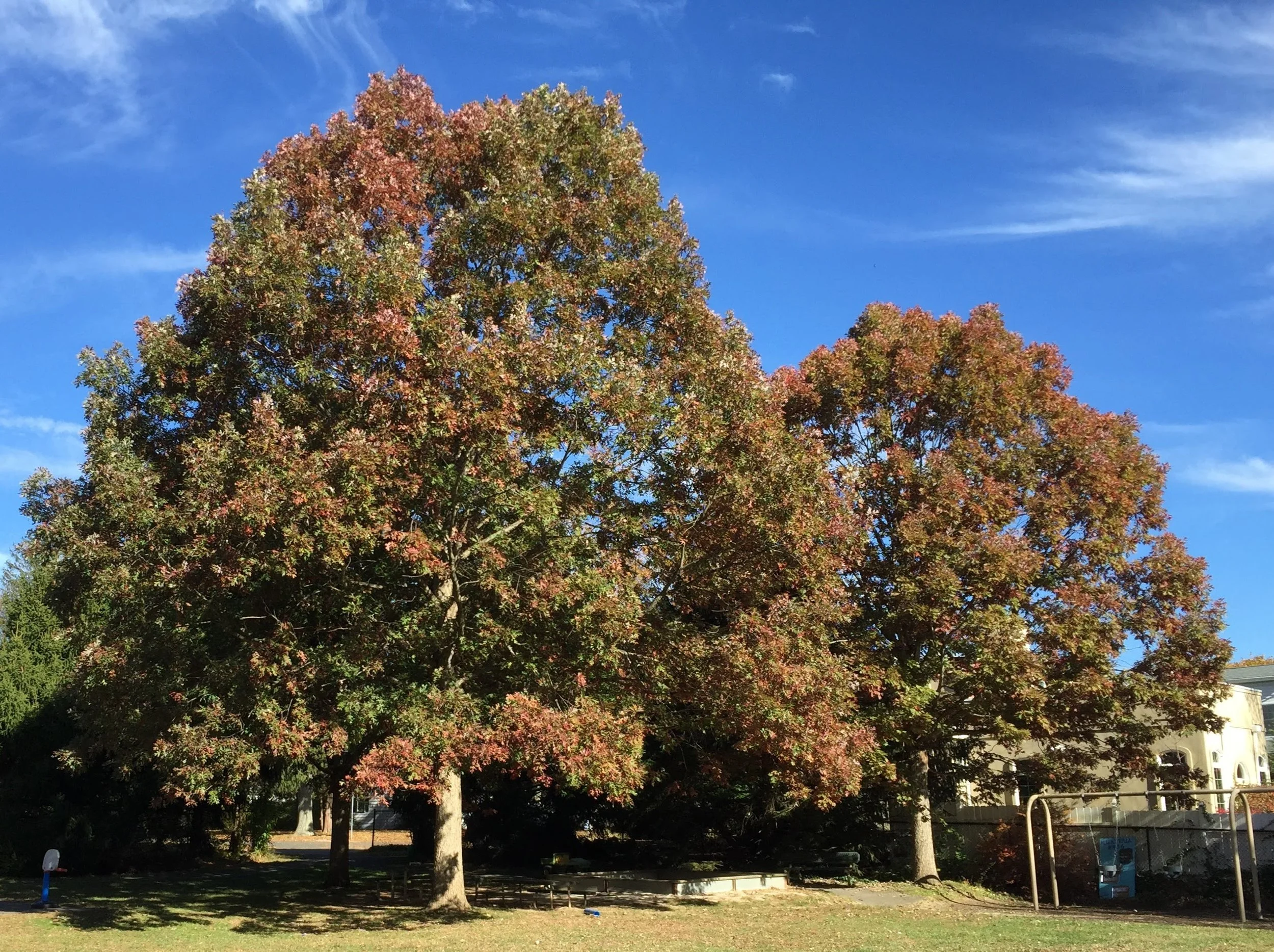White Oak
Latin name: Quercus alba
Etymology: Quercus alba gets its name from the color of the finished wood. Quercus is the Latin word for ‘oak’ while the species name comes from the Latin word for ‘white’ (albus).
Family: Fagaceae (Beeches)
Origin: Eastern and central North America
Native habitats: Dry upland slopes and ledges as well as lowland valleys and ravines.
White oak is a towering component of the canopy, found in uplands throughout Herrontown Woods. Gray bark and leaves with rounded lobes distinguish it from other kinds of oaks. Leaves can turn deep burgundy in fall, and persist on the tree through early winter.
Description: White oaks have a height of between 60-150 feet and a diameter of 2-5 feet. Leaves are rather evenly lobed without bristly tips, hairless and may be somewhat whitened beneath. They measure between 2-9 inches and turn purplish brown to reddish-brown late in the fall. The bark is light gray and slightly furrowed to scaly. Flowers are greenish-yellow catkins in pendulous long chains (male) or small and greenish-red (female) and appear in April. Fruits are acorns with bowl-shaped light tan, or gray cups with warty scales that cover 1/3 or less and appear from September-November.
Similar species: The leaves are similar to those of Swamp White Oak but the latter species has shallower notches.
Wildlife value: White Oak is the host plant for hundreds of moth and butterfly larvae. Its acorns are a high value food source for many mammals and birds and it is a good cavity tree.
Uses: Native Americans boiled and ate the acorns of White Oak and settlers fed them to their pigs to fatten them up before slaughter.
Today, White Oak is one of the most important hardwoods and goes into products such as luxury wood flooring, furniture, beams, railroad ties, fence posts, mine timbers, ships, and caskets and barrels. Due to its’ high tannin content, White Oak bark was and is used for tanning leather.




